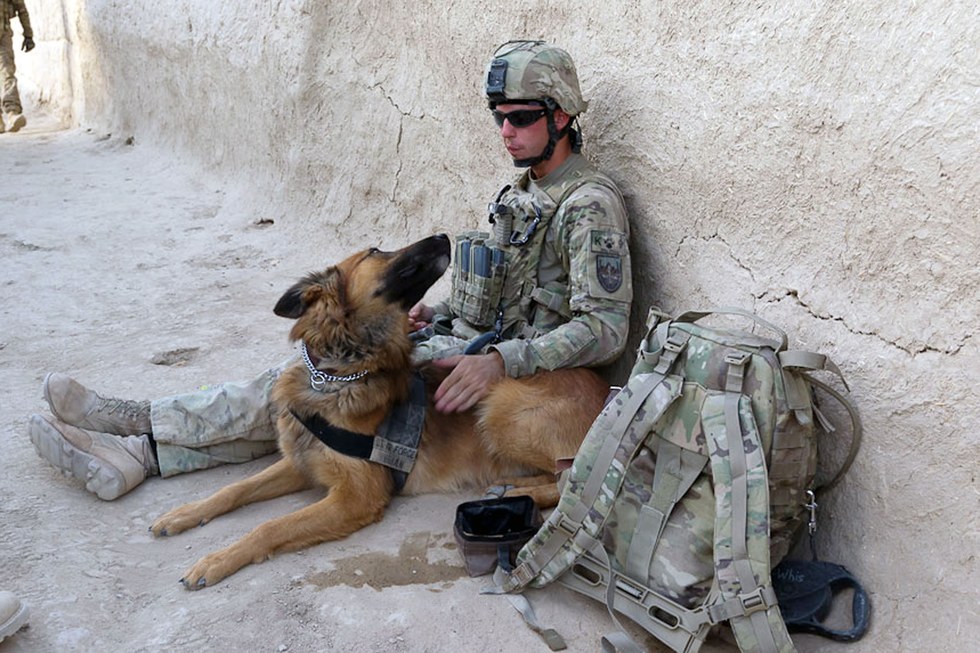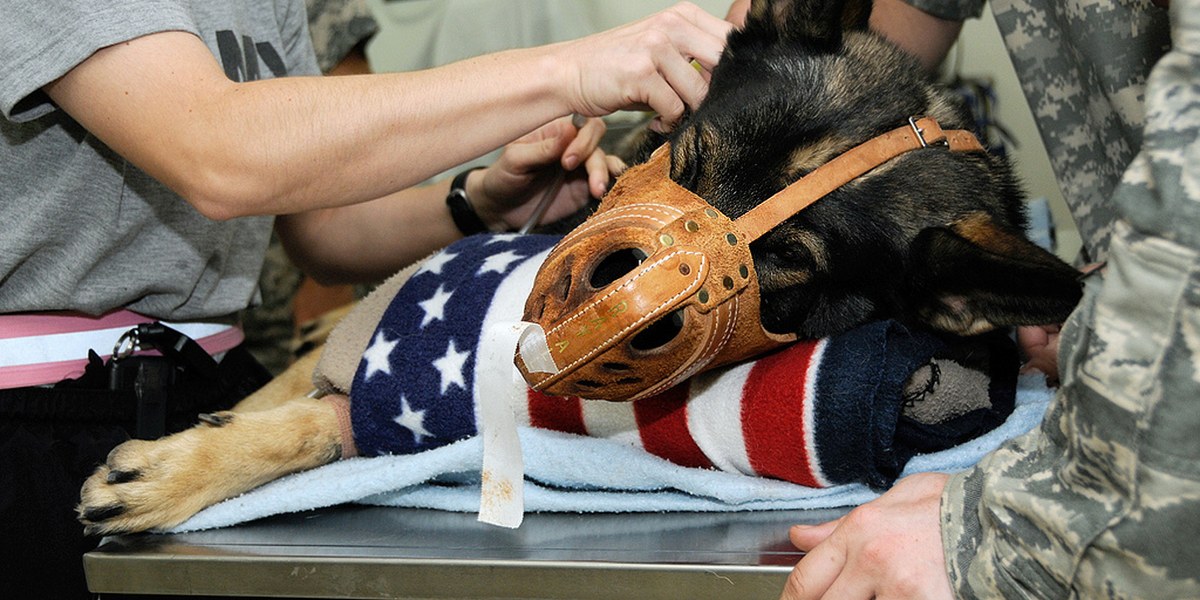As of 2012, more than 2,700 dogs are working in the U.S. military. About 600 are reportedly serving in combat zones, sniffing out explosives, clearing buildings and tracking enemy fighters.
The LA Times reports that about 2,500 Dutch and German shepherds, Belgian Malinois and Labrador retrievers have been added to the ranks after the 2001 terrorist attacks. They are trained in bomb detection, guard duty or "controlled aggression" for patrolling.
But opponents believe that we shouldn't involve innocent animals in our wars - especially since they have no choice.



According to Walter Burghardt Jr., chief of behavioral medicine and military working-dog studies at Lackland, at least 10% of the hundreds of dogs sent to Iraq and Afghanistan to protect U.S. troops have developed canine PTSD.
Although there are no statistics, it is estimated that half of the dogs that return with PTSD can be retrained for work at police departments, the Border Patrol or the Homeland Security Department.
While the others are retired and made available for adoption.
But the question still remains - should dogs pay the price for our wars? Is it ethical?
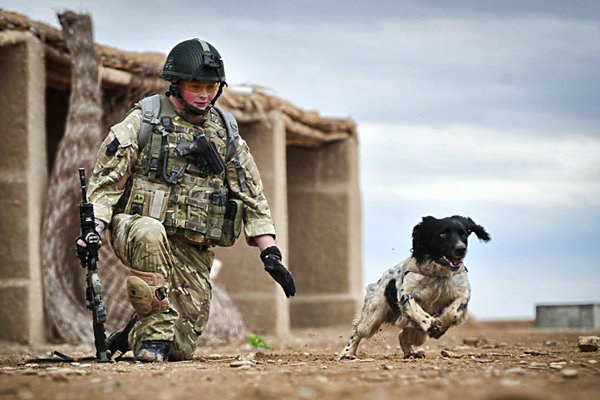
America's Most decorated dog of WWI
Dogs have been used in wars pretty much since domestication. They are keen trackers, hunters, loyal and easy to train. Older Americans might remember the exploits of Sergeant Stubby, the most decorated war dog of World War I.
Sergeant Stubby was a stray homeless mutt who was found wandering the grounds of Yale University campus in July 1917. It was there that he met Corporal Robert Conroy and the members of the 102 infantry.
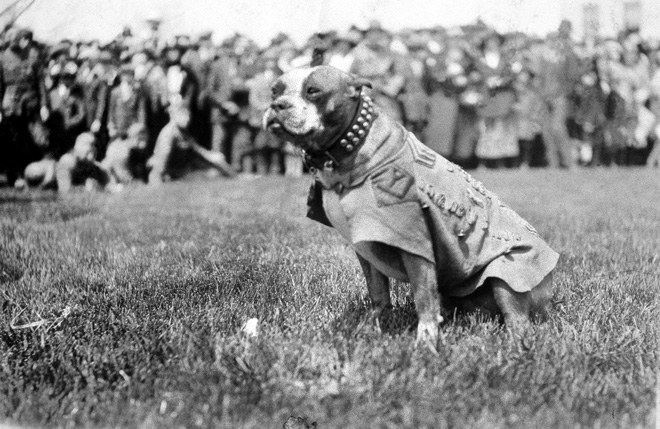
Stubby was a highly intelligent mix Pit Bull Terrier breed who actually learned the bugle calls, execute marching maneuvers and could salute on command.
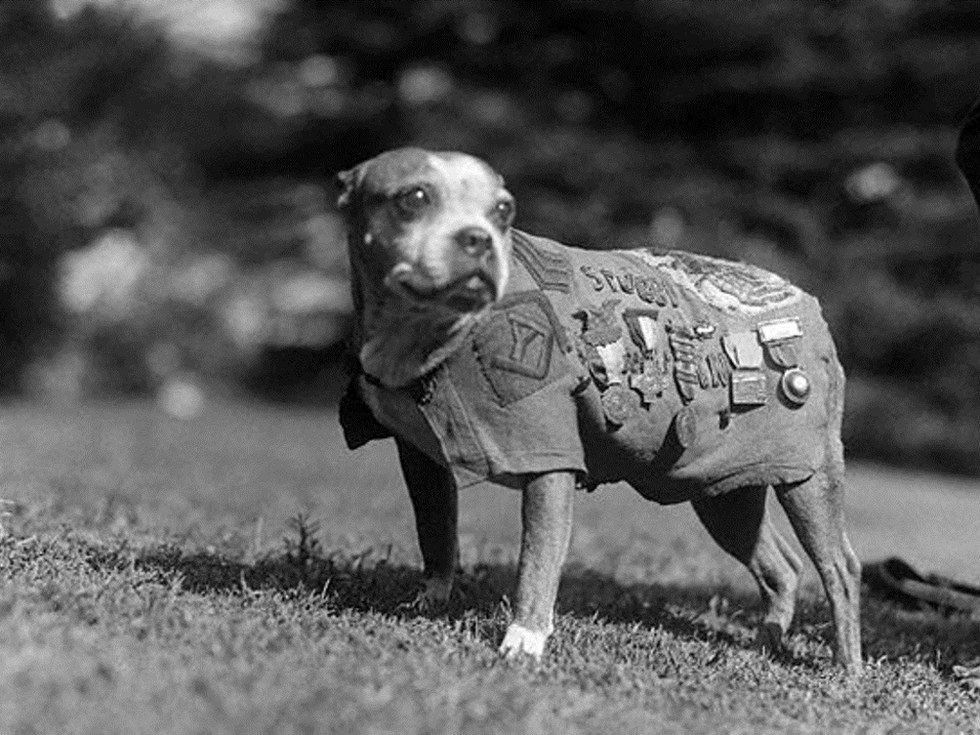
When it was time to deploy, Corporal Conroy decided to bring Stubby with him. He snuck the little dog onto the troop ship and then into France without detection. When his commanding officer finally discovered the dog, Stubby saluted him.
Obviously, he was allowed to stay.
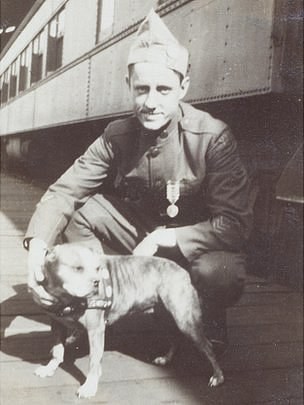
Stubby served with the 102nd Infantry regiment (United States) for 18 months and participated in seventeen battles on the Western Front.
Not only did this incredible dog save his regiment from surprise mustard gas attacks, but he located the wounded and even caught a German soldier by the seat of his pants - holding him there until the Americans found him.
Stubby survived the war, although not without injury. He was poisoned by mustard gas and injured in the chest and leg by a grenade. Conory smuggled Stubby home to the States at the end of the war.
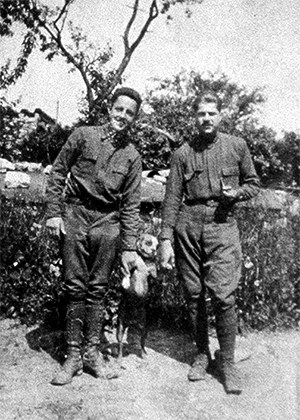
After he died in 1926, Stubby was immortalized in a plaster cast and presented to the Smithsonian in 1956. In honor of the United States World War I Centennial Comission, an upcoming film about Sgt. Stubby's heroics will be released in spring of 2018.
Let us know what you think in the comments below! Is it ethical if we honor them as soldiers? Or are we asking too much of these trusting creatures?
